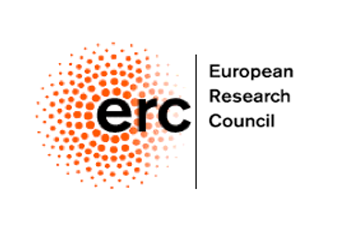Molecular Drug Targeting
Our mission
The Molecular Drug Targeting (MDT) lab has a strong focus on the development of small molecule ligands for targeted delivery purposes. For this, protein-ligand interactions are investigated using biophysical and computational techniques as well as cell-based methods. In particular, the lab is interested in glycan-binding proteins as drug targets (e.g. C-type lectins) since they often represent unique markers for cell subsets.
Our work
Mammalian glycan-binding proteins are involved in cell migration, pathogen recognition, uptake and processing, and determine many aspects of cellular communication. In particular, a large number of carbohydrate receptors are found on cells of the innate immune system. Strikingly, many of these receptors are uniquely expressed on defined immune cell subsets allowing us to specifically address these cells in their complex biological environment. Hence, these cells, initiators and regulators of an effective immune response, are attractive targets for the therapeutic modulation of the immune reaction.
Consequently, small molecule modulators of these carbohydrate-protein interactions would be beneficial for basic research and therapeutic intervention. Unfortunately, carbohydrate-binding sites are often rather featureless and flat and are therefore considered either challenging or undruggable, hampering the development of small molecule inhibitors. Additionally, only a limited number of high throughput screening attempts have been successful against this class of biomolecules. Our work is concerned with the development of glycan receptor-specific ligands primarily resulting from fragment-based screening approaches using biophysical assay such as 19F NMR, STD NMR, HSQC NMR, and SPR. These assays are complemented by in silico approaches as well as screening on chemical fragment microarrays and also by a recently developed cell-based assay that allowed screening of our fragment library. Based on these chemical probes resulting from fragment-based design, we explore basic immunological questions as well as applied aspects such as small molecule targeted delivery of stimulants to specific immune cell subsets.
Research Topics
- C-type lectins
In particular, we have focused on members of the C-type lectin family, which are expressed on cells of the innate immune system. These cell surface receptors promote pathogen recognition and, in some cases, also endocytosis. This recognition process is based on the interaction of the lectins with glycans found on the invading pathogen, often sufficient avidity is gained by homooligomerization of the receptor. On a molecular level, a central Ca2+located in the carbohydrate binding site allows for the coordination of the glycan. Once endocytosed, this Ca2+coordination can be perturbed by endosomal acidification and reduction of local Ca2+concentration. While Ca2+sequestering directly impairs carbohydrate recognition, pH-dependent loss of the receptor multimerization state results indirectly in cargo release in the endo-/lysosomal pathway. Taken together, C-type lectins harbor several molecular determinants in their overall architecture to promote pathogen binding, but also to enhance cargo release, rendering these receptors rather flexible on various time scales. In the framework of the ERC-funded project GLYCONOISE we are investigating how information can be encoded into glycan structures and how this data can be decoded by cell surface exposed lectins.
- Small molecule modulators of C-type lectins
In our search for small molecule modulators of C-type lectin receptor function, we make use of the structural plasticity of these lectins. Previously, we have highlighted the discrepancy between the static picture of these proteins as inferred from X-ray crystallography and the experimental description of susceptibility of these proteins for drug-like molecule binding. We found that besides the shallow and featureless carbohydrate recognition site, several secondary sites exist that are partially druggable and offer possibilities for inhibitor design against C-type lectins. These insights are complemented by our studies into the receptor flexibility using protein NMR in combination with molecular dynamics simulations, revealing an allosteric network of communicating amino acid sidechains. This network regulates the Ca2+affinity and partially its pH sensitivity in human Langerin. In summary, based on these insights on existence of druggable secondary sites and the presence of allostery, we were able to develop a series of allosteric inhibitors of C-type lectins. Moreover, we have setup an infrastructure for the screening of novel chemotypes binding to C-type lectins, opening up new avenues for drug development.
- Small molecule-mediated targeted delivery to Langerhans cells
The skin represents an attractive organ for the application of novel vaccines since it harbors a large reservoir of resident immune cells capable of eliciting a systemic response against antigens. In particular, Langerhans cells (LCs) are located in the epidermis, the upper layer of the skin. Insight generated over the past decades has highlighted the ability of LCs to promote a systemic cytotoxic T cell response. These responses were primarily investigated using antibody-based delivery of antigens to LCs and were especially effective when Langerin was used as a targeted receptor. Langerin is a LC-restricted C-type lectin receptor. We have developed a small molecule ligand specific for Langerin that we here explore as the basis for antigen delivery via liposomal formulations as well as LNP-based mRNA delivery to these immune cells. We were able to show specific uptake of these particles into Langerin-expressing model cells as well as primary human LCs. Furthermore, we study their endosomal fate and intracellular processing. Overall, these highly specific nanoparticles potentially build the basis for innovative delivery of vaccines via the skin.
- Inhibitors of bacterial lectins
Pathogenic microorganisms (viruses, bacteria, fungi and parasites) have developed strategies that utilizes the sugars present on our tissues for recognition, adhesion and infection process. Lectins from the pathogens are located on the capsid of viruses, on pili at the surface of bacteria, or are secreted in the form of toxins and virulence factors. Molecules that could interfere with such carbohydrate-protein interactions are therefore of high interest as anti-infectious agents. Since they prevent the binding without killing the pathogens, they have different modes of action than antibiotics and could be of great interest for the arising issues of multiresistant pathogens. We have applied a variety of biophysical approaches to identify new inhibitors for bacterial lectins and have also explored the possibility for allosteric modulation of these targets.

- Allostery in Drug Discovery
Most drugs on the market are designed to bind directly to primary active, so-called orthosteric, sites. Allosteric modulators offer important advantages over orthosteric ones: they can be more selective because allosteric sites are less conserved, they can change protein levels or localization within the cell, change subtle aspects of protein function and are unique in their ability to provide target activation. Furthermore, allosteric drugs can be used synergistically with orthosteric ligands, an approach that has been successfully used to prevent emergence of resistance in cancer therapy. Up to date in the literature, the discovery of allosteric binding sites and lead compounds targeting those sites has been mostly serendipitous, achieved through high-throughput screening or modification of endogenous allosteric ligands and subsequent follow up experimental work on the mechanism of action, but not rational design. In the framework of the EU ITN ALLODD, focusing on the allostery in drug discovery, we and many other partners from academia and industry are developing new tools to predict, understand and rationally explore allostery as a principle in drug development.

